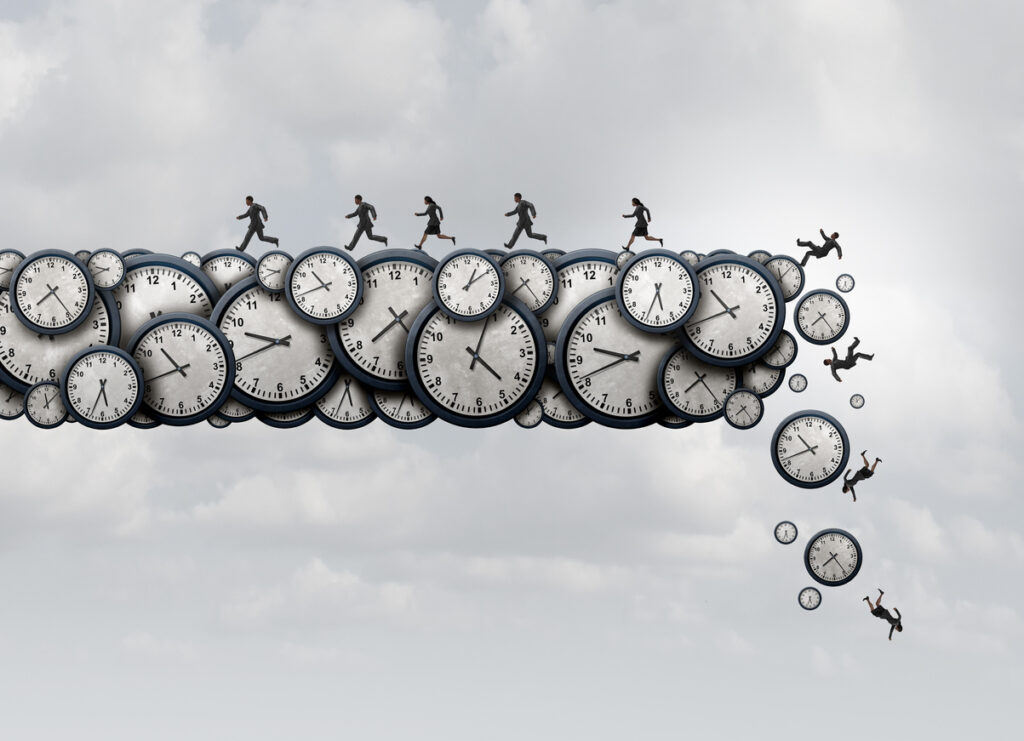Over the past two years the concept of working your proper hours has become even more important as our bedrooms and living rooms have become our offices, blurring the boundaries between home and work. This means it is now harder for employees to properly switch off and find time for the things they love.
It is well known that overworking leads to burnout and a decline in wellbeing, in fact the World Health Organisation found that long working hours kill around 745,000 people a year. Yet WorkSmart still found that over five million people gave their employers £35 billion of free work in 2019.
To combat the negative impacts of overworking, businesses need to implement purposeful processes to ensure that employees are able to log off on time and protect their wellbeing.
We need to move away from the traditional view on what a typical working day, or week ‘should’ look like
The non-linear working day
The first key ingredient in making any shift to remote working a success is embracing the non-linear workday. Any change in how we work requires an evolution of culture, and while remote this means adapting to ensure that both asynchronous and real-time collaboration can thrive.
But to do this, we need to move away from the traditional view on what a typical working day, or week ‘should’ look like and instead move to a place where employees are empowered to choose how and where they do their best work.
It can be difficult for businesses to put this into practice rather than just playing lip service, and so specific policies need to be put in place to encourage all employees, no matter their position, to make this mindset shift.
This is why at Dropbox we launched ‘Core Collaboration Hours’ for all our employees globally. These are four-hour windows reserved for live meetings, aligned to the time zones that teams most overlap with. For example, a typical day for a European employee could look like taking meetings between 10am and 12pm, and then again between 4pm and 6pm, to allow for cross-time zone collaboration.
Teams have the freedom to adapt these are required and time outside of this is reserved for independent, focused work that doesn’t have to be done during the typical working day. Employees can structure their diaries around their own preferred work patterns, whether they’re early birds, night owls, or parents working around school schedules or childcare.
By driving this shift away from the traditional concept of the 9-5 workday, employees have true control over their calendars and so can focus on what they love outside of work.
Outside of work HR and business leaders can also take steps to encourage employees to take time off and to truly switch off while on holiday
Preventing an ‘always on’ culture
But despite the steps we take to work asynchronously, it can be hard to step away and switch off when we rely so heavily on our tech tools. With Covid further blurring the boundaries between home and work, we quickly saw this ‘always on’ culture threaten motivation and increase the risk of burnout. Once again, the way for HR and business leaders to help deal with this is by implementing policies that make a difference to how employees work.
While at work, we can encourage employees to interrogate their calendars and be mindful of whether meetings are necessary or not. We’ve actually developed our own screen recording tool called Dropbox Capture, which has become essential in cutting back on meetings and emails. This change can ensure that employees are logging off on time rather than spending the whole day in back-to-back meetings. Outside of work HR and business leaders can also take steps to encourage employees to take time off and to truly switch off while on holiday. We have launched an initiative called ‘Unplugged PTO’ to help drive this.
We’ve given employees the power to switch off access to their work account and notifications while on annual leave. This is integrated into our HR management platform and so can automatically be switched back on when the employee returns to work. This is a big step in giving employees more trust and control, as well as allowing them to mentally disconnect from work rather than feeling the need to promise that ‘I’ll be out but I’m still available’.
This need to be busy for the sake of looking busy needs to end if we are to reduce the prevalence of burnout and stress in the workplace. With 71% of UK employees experiencing some degree of burnout, something needs to change.
[embed-slice:21]
The future of work
Remote working is here to stay, whether companies decide to adopt hybrid or go fully remote. But this means that it is no longer good enough for businesses to make sweeping statements about confusing remote working policies. Instead, they need to implement clear changes that empower employees – no matter where they are working, whilst simultaneously supporting their mental health and wellbeing.
Working your proper hours shouldn’t be observed on one day of the year, it should be a norm that is encouraged by HR and business leaders, and something that all employees feel empowered to do.
Interested in this topic? Read Do you need a hybrid mindset to go with your hybrid working?
[cm_form form_id=’cm_65a14c3f5da64′]






